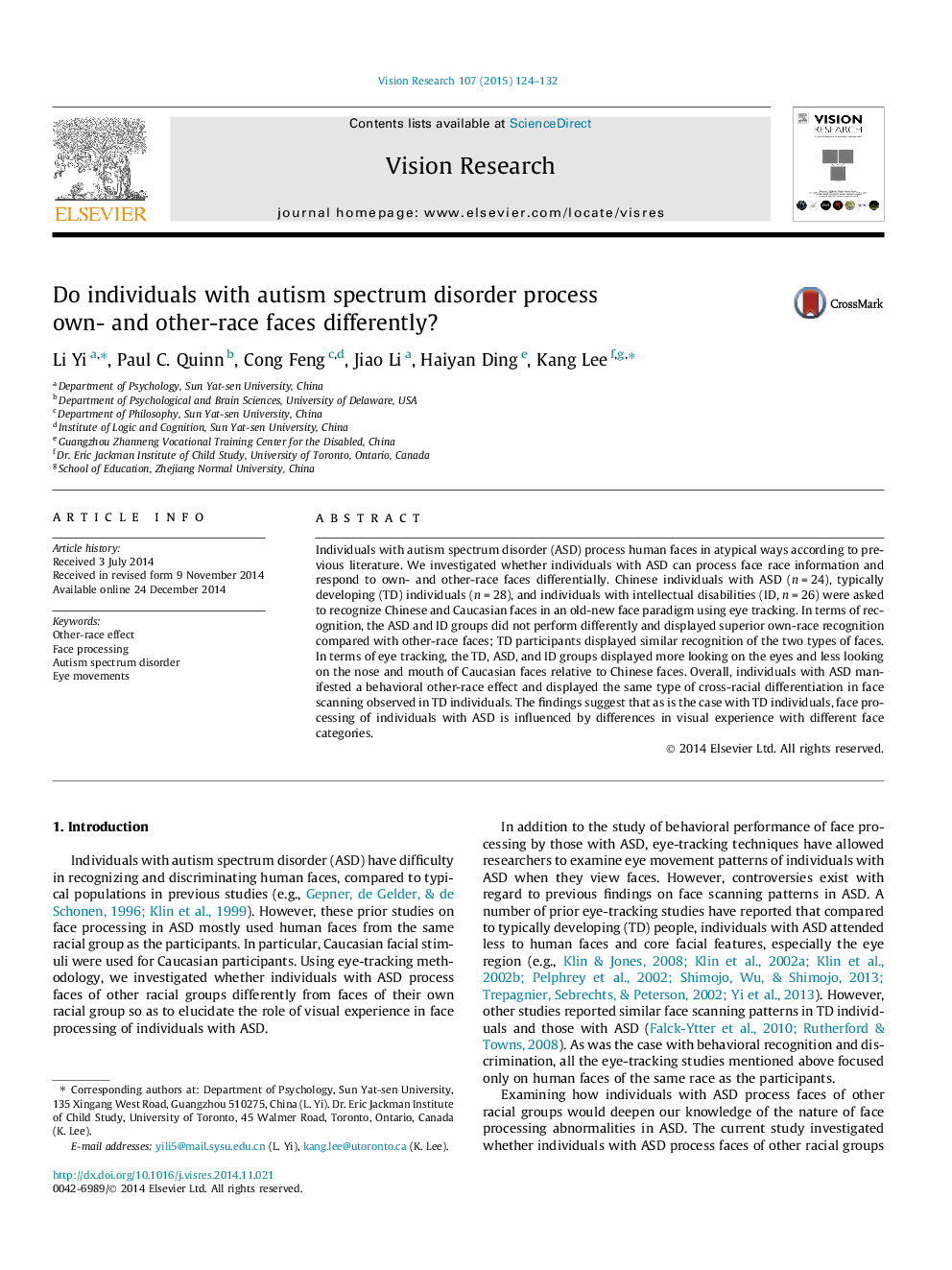| Article ID | Journal | Published Year | Pages | File Type |
|---|---|---|---|---|
| 6203384 | Vision Research | 2015 | 9 Pages |
â¢Individuals with autism show superior recognition of own- than other-race faces.â¢Individuals with autism look longer at the eyes of other- than own-race faces.â¢People with autism look more at the nose and mouth of own- than other-race faces.
Individuals with autism spectrum disorder (ASD) process human faces in atypical ways according to previous literature. We investigated whether individuals with ASD can process face race information and respond to own- and other-race faces differentially. Chinese individuals with ASD (n = 24), typically developing (TD) individuals (n = 28), and individuals with intellectual disabilities (ID, n = 26) were asked to recognize Chinese and Caucasian faces in an old-new face paradigm using eye tracking. In terms of recognition, the ASD and ID groups did not perform differently and displayed superior own-race recognition compared with other-race faces; TD participants displayed similar recognition of the two types of faces. In terms of eye tracking, the TD, ASD, and ID groups displayed more looking on the eyes and less looking on the nose and mouth of Caucasian faces relative to Chinese faces. Overall, individuals with ASD manifested a behavioral other-race effect and displayed the same type of cross-racial differentiation in face scanning observed in TD individuals. The findings suggest that as is the case with TD individuals, face processing of individuals with ASD is influenced by differences in visual experience with different face categories.
